As we outlined last month, the “epic” Bernal Heights view home at 149 Bradford Street, which was purchased for $2.25 million in April of 2018, having been newly expanded and remodeled, returned to the market this past January listed for “$1,995,000.”
The three-bedroom, two-bath home is outfitted with a contemporary great room and finishes, multiple skylights, and a lower-level bedroom and adjacent “multi-use space” that open to a level yard with two decks and a fire pit.
And the sale of 149 Bradford has now closed escrow with a contract price of $2.5 million, which is officially 25 percent “over asking!” but only 11 percent over its early 2018 price on an apples-to-apples basis, representing average annual appreciation of under 3 percent for the Bernal Heights home over the past four years while the Case-Shiller index for single-family home values in “San Francisco” is up 30.7 percent over the same period of time.
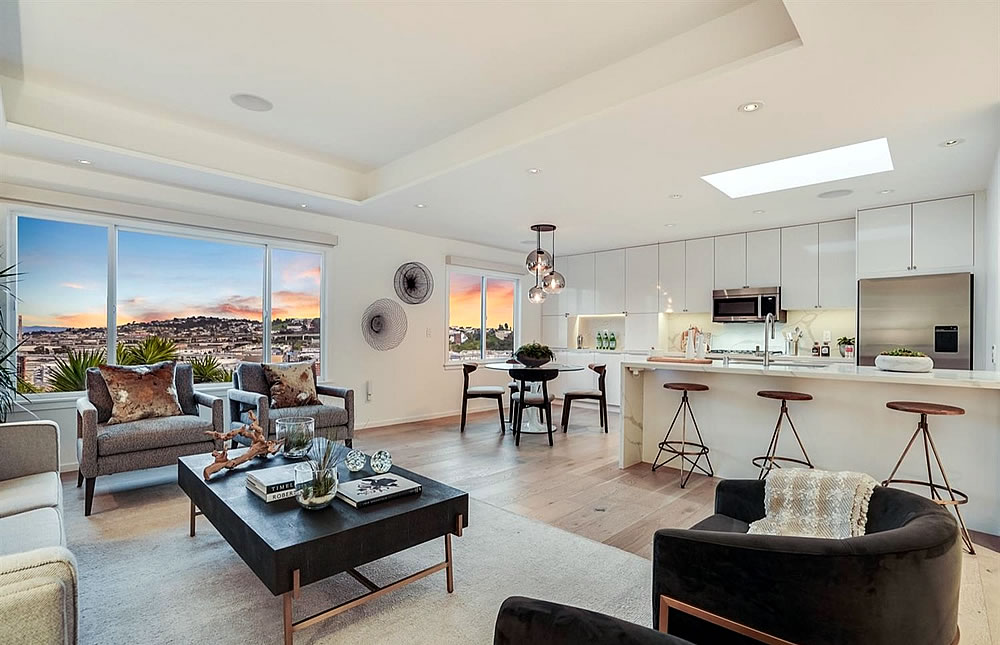
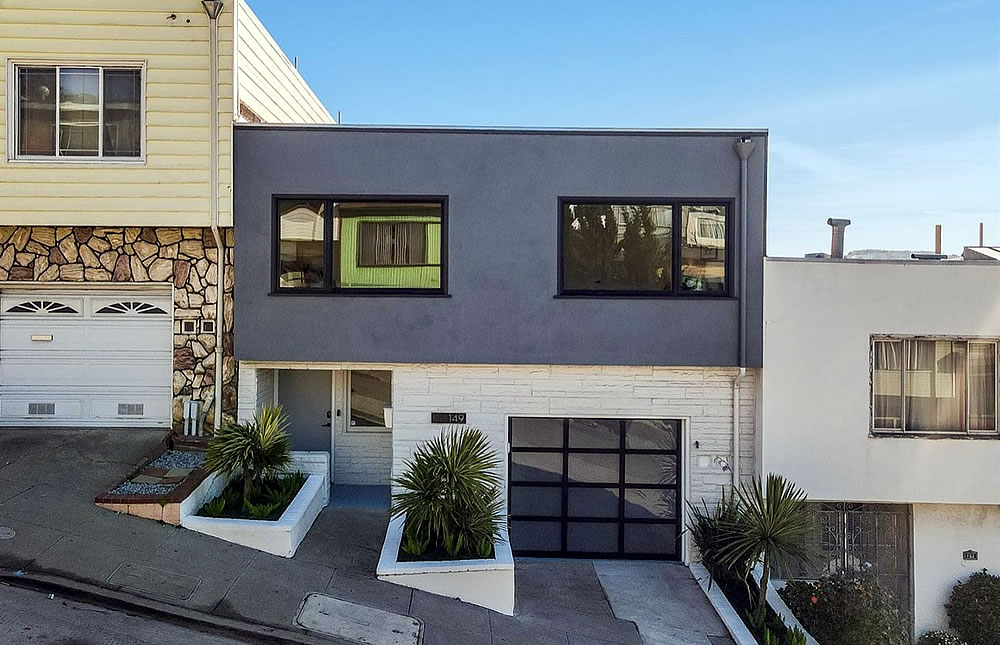

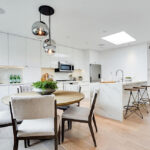
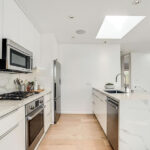



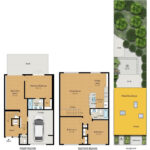
Above what anyone guessed.
Aw c’mon, there were a couple ~2.4 guesses. If we’re playing Price is Right rules…
And a sale at $2.4 million would have represented total appreciation of 6.7 percent since the second quarter of 2018 or under 2 percent per year for the renovated single-family home.
… now do 936 Esmeralda , ~700K gain in 25 months …
Whoever bought that place has to be completely nuts. $4M in Bernal??? Wow.
So many people adore Bernal these days that your comment is unintentionally funny. There have been like 6 or 7 4M+ sales in Bernal and there are more to come soon. In the other comment you wrote Rincon and Bernal in the same sentence as if they’re remotely comparable too. Kind of weird.
Yeah, but the Editor didn’t say Price is Right rules. My point is that even hangers on in the game (RE not PiS) didn’t think it would get this much.
Is there a word for “I wouldn’t have guessed that but I’m not surprised now that it’s happened”? Perhaps in German.
But a quick look here estimates inflation as 13% from 2018 to now. So a 13% inflationary gain and a -2% real gain to produce a 11% nominal gain.
I think its the inflation factor that people are underestimating. It was so low for so long that people just stopped thinking about it. People are falling prey to the “money illusion” and trying to impart meaning to nominal prices. Now at least in this short term resale, inflation became a dominant factor. The real $1M question is whats inflation going to be like in the long term going forward. Powell is sure talking tough and making a good start. It’ll be tougher to stick to his guns when rate increases start causing real economic pain.
Interesting sale. Congrats to the seller. The original remodeler did a great job making the most of one of the Bradford boxes. Not what I would want to pay to have a brewery and a freeway in my backyard, but to each their own. Reminds me of the resale of 76 Bronte last fall, which also netted 3% per year apples to apples.
Whoever took that lead picture should be fired – just take a couple steps to one side so that you don’t have a garish reflection of the lime-green facade of the house across the street filling one of the two picture windows… People are oblivious to the simplest things…
I don’t think that image is from the seller. The listing image is a ridiculous HDR sunset, of course.
I take it back, that photo *is* in the packet…
Based on the floor plan that looks like a ridiculous HDR sunrise. But they might enjoy it given their early rising hour to get down to the peninsula on 280.
All I know is, I want to be the owner of the property next door to the left. Cha-ching!!!!!!
“Officially 25 Percent “Over Asking!” in Bernal Heights, But…”
——->we’ll still find something negative to say about it.
But . . . it only sold for $250,000 more than four years ago, when we had a horrific pandemic for two of those years. So that’s . . . really . . . a bad outcome? Okay, it under-perfromed the market, I’ll grant the editor that.
Positive outcome…clearly some thought in advance that this one wasn’t going to end so well!
$2.5 million for 1525 SF in the southeast corner of Bernal– the seller did well.
Here’s something to think about — everyone always looks at housing as an investment, but to a certain extent, it’s consumption as well. I always used to think that people overpay for new construction or newly renovated homes, but maybe new construction / newly renovated homes are worth more because they haven’t been consumed yet. Four years ago, this house was brand spanking new. The appliances all had new warranties. The floors were pristine. The roof had 4 more years on it’s life, etc. etc.
As someone who bought 10 years ago and did a gut renovation, the first few years involved zero maintain costs, but since then the roof needs to be replaced, the water heater blew up, the washing machine is on the fritz, the floors are scuffed, some tile cracked.
People pay more for new and shiny and if you look at the total cost of ownership, there is a reason for that.
Folks fixated on “wow 2.5 In SE Bernal” haven’t seen anything yet. Because consumers don’t yet comprehend how incredibly expensive it has become to remodel and build these days. SFDBI being the Kafkaesque slog that it is slows things, so it’s never a massive wave at once. But there’s simply no way these freakishly expensive new costs for plumbing, electrical, sheet rock, plywood, etc aren’t going to get passed on to buyers. Sticker shocks are going to keep coming and coming
I should add trade labor itself in there as a pandemic spike. If you can get a contractor to even look at your project, he or she cost twice as much as they did 2 years ago. Who’s going to pay for that?
Maybe it is just luck but I haven’t noticed cost increases spiking like that. Yes, the costs have risen as expected, but not a spike.
Have you sourced plywood, steel or electrical, plumbing, or roofing contracting in the past 18 months ?
Electrical, plywood, plumbing, roofing – yes. steel – no.
Other stuff recently: doors, painting, custom cabinetry, countertops, locksets, flooring, and in most cases labor.
That said I tend to bargain hunt. For example I bought some flooring last year at about a 70% clearance discount and the countertop was made from a remnant. I am however comparing apples to apples bargain-wise.
“Sticker shocks are going to keep coming and coming…”
Yes, but they are going to be coming and coming for everything. That’s inflation.
The “Money Illusion” is the fallacy of looking at hundreds of rising prices and trying to come up with hundreds of disparate explanations. What’s actually going on is that the value of a dollar is shrinking.
Salad prices are up 11% since March according to this. Is is because people simply adore salad these days? Was the salad grown on the sunny slopes of bernal?
Once people get past the money illusion what’s really going to matter, based on historical periods of high inflation, is exactly how well certain prices track inflation.
Are you making (or taking) a fixed or floating rate loan? Landlord or tenant of a long term lease (or rent controlled unit)? Who is on the hook for energy costs? Made a fixed bid contract with current nominal prices? When you start to have situations like this where inflation dominates the gross returns, then these questions above start to dominate the real net outcomes.
Of course it’s inflation, no one said it wasn’t, but the construction sector is nothing like your 11 % salad example.
Yes, very very true. I just finished an investment project in SF that was priced last June & the overall cost ended up 80% higher than my initial worse case scenario. Would not have have gone forward if I knew how it was going to play out. Remodeling is not for the faint hearted & be prepared to have lots of contingency in your budget.